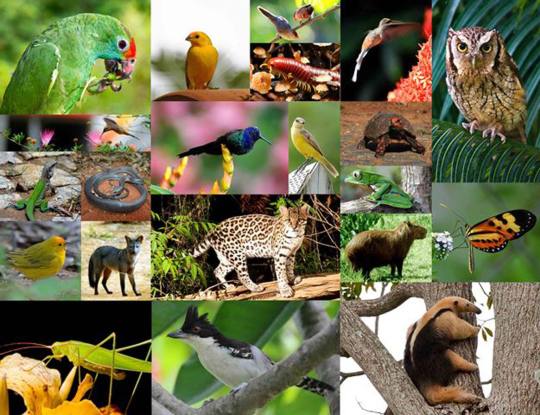Soy lo que dejaron, soy toda la sobra de lo que se robaron
Don't wanna be here? Send us removal request.
Text






Santiago — Chile, 25 de Noviembre de 2019.
Fotógrafo: Juan C García.
1K notes
·
View notes
Photo

Tiwanaku/Bolivia
By Nicolás Cúneo (500px)
36 notes
·
View notes
Photo

EDUCAÇÃO NÃO É MERCADORIA!
Escola Emílio Meyer, em Caxias do Sul.
69 notes
·
View notes
Photo

Duque de Caxias genocída!
Ocupação do I.E.E. Cristóvão de Mendoza, em Caxias do Sul.
41 notes
·
View notes
Photo

Privilegio es cuando tú piensas que algo no es un problema porque tú no estás siendo personalmente afectado por ello
3K notes
·
View notes
Photo

ZygmuntBauman sobre cómo al neoliberalismo le conviene, para subsistir, tener Estados débiles que fomenten la pobreza e inhabiliten, por tanto, la organización política de los desposeídos. (“Tiempos Líquidos”, p. 94)
251 notes
·
View notes
Text

Darlan is GOLD!!!! The man wasn't even at his best and broke the fuckin recorde!
9 notes
·
View notes
Text
“it’s okay to disagree” is for things like “i like chocolate and you like vanilla” not for whether or not people deserve fundamental human rights, what the fuck
123K notes
·
View notes
Photo

July 14 2019 - A woman deplatforms famous Brazilian Catholic priest Marcelo Rossi, who has called homosexuality a disease. [video]
185K notes
·
View notes
Photo

69K notes
·
View notes
Text
Today I learned about a couple that decided to rebuild their deserted piece of land of 600 hectares in Aimorés, Brazil. They planted more than 2 million tree saplings. As a result, the site has 293 plant species, 172 bird species and 33 animal species, some of which were on the verge of extinction. It only took 18 years!

In the early 1990s, Brazilian photo-journalist Sebastião Ribeiro Salgado was stationed in Rwanda to cover the horrific accounts of Rwanda genocide. The on-ground experience left him traumatised. In 1994, he was returning to his home in Minas Gerais, Brazil, with a heavy heart, hoping to find solace in the lap of a lush green forest, where he had grown up.
But, instead, he found dusty, barren land for miles and miles, in place of the forest. In only a few years, his beautiful hometown underwent rampant deforestation, leaving it fallow and devoid of all the wildlife. For him, everything was destroyed. “The land was as sick as I was. Only about 0.5% of the land was covered in trees,’ he shared in an interview with The Guardian. Salgado was shattered.
Saldago’s Wife Wanted to Recreate The Forest
It was at this time that Salgado’s wife Lélia made a near-impossible proposal. She expressed her wish to replant the entire forest. Salgado supported her idea, and together the couple set out on a heroic mission. Brazil Photographer Forest
Salgado bought an abandoned cattle ranch from his parents and started building a network of enthusiastic volunteers and partners who would fund and sustain their mammoth project. In 1998, the couple founded Instituto Terra – the organisation which tirelessly worked to bring a forest back to life.

PNHR Bulcão Farm | by Weverson Rocio – 2012
Salgado sowed the first seed in December 1999. The couple hired around 24 workers in the beginning and was later joined by numerous volunteers over the years. They worked day and night – from uprooting the invasive weeds to planting new seedlings. Soon, their hard work bore fruit as tropical trees native to the region started flourishing in the area. They received a donation of over one lakh saplings which gave rise to a dense forest. The handcrafted forest comprises mostly of local arboreal and shrub varieties. Latest satellite imagery revealed how a soothing green forest cover has enveloped the area which once was a devastating arid eyesore.Since 1998, they have planted more than 2 million saplings of 293 species of trees and rejuvenated 1,502 acres of tropical forest. The biodiversity-rich zone has recently been declared as a Private Natural Heritage Reserve (PNHR).
youtube
The Impact of Salgado’s Forest
The afforestation project, which is undoubtedly one of the greatest environmental initiatives in the world, has also helped to control soil erosion and revived the natural springs in the area. Eight water springs which once dried up, flow at around 20 litres per minute at present, relieving the drought-prone region of its woes. Salgado’s forest also happens to solve the much-debated notion about climate change, proving that the trend can be reversed if tried. His forest has resulted in causing more rainfall to the area and cooler weather, bringing a drastic and desirable change in the climate.

Instituto Terra’s Fauna | by Leonardo Merçon – 2012
The most important positive aspect of the forest till now has to be the return of the lost fauna. More than 172 species of birds, 33 species of mammals, 15 species of amphibians and reptiles have been spotted in the forest interiors, something which was beyond imagination two decades ago. Many of the plant and animal species in his forest actually feature on the endangered list.
Efforts For Good
Climate change is a harsh reality. Mankind is bearing the brunt of the relentless destruction they inflicted on the planet. Yet, people like Salgado and Lélia fill us with hope, proving that patience and persistence can be our keys to heal the wounds of nature. If two people can create a 1502-acre forest in just 20 years, then imagine how much can be done if everyone comes together to protect the environment. It must be reminded that for every tree we plant, we are adding 118 kgs of oxygen to the air every year, and reducing the carbon footprint by 22 kgs.
Efforts For Good urges all the readers to actively engage in planting trees and gradually turn this into a fixed habit.
Sources: http://www.scienceinsanity.com/2019/03/brazilian-couple-created-1502-acre.html
https://www.reddit.com/r/interestingasfuck/comments/bg0ebn/a_couple_decided_to_rebuild_their_deserted_piece/
103K notes
·
View notes
Photo










No dia 13 de dezembro de 1968, durante o regime do presidente Costa e Silva, entrava em vigor o Ato Institucional número 5, o maior símbolo da repressão. A partir deste decreto, os “Anos de Chumbo” se iniciam, sendo marcados pela censura e pela tortura. Neste ano, completa-se 50 anos do AI-5.
Buscando relembrar, não só as consequências do AI-5, mas também os 21 anos de ditadura, os monitores do Comunica com Foto, Julia Guelli e Victor Andrade, realizaram o ensaio fotográfico “68/50”. Por meio das fotografias, buscaram retratar e lembrar algumas das comuns realidades do período militar, como as perseguições e prisões, utilizando como referência a estética do “Expressionismo Alemão”.
Este movimento que se desenvolveu na Alemanha no século XX, em um período pós-guerra, buscava por meio dos cenários distorcidos, dos jogos de luzes e das expressões enaltecidas, por exemplo, representar o interior humano. Assim, o ensaio utiliza estas características para transmitir a dramaticidade e os acontecimentos que marcaram os anos de militarismo e a memória de todos os brasileiros que foram forçados a vivenciar esta realidade. Fotógrafos: Julia Guelli e Victor Andrade Modelos: Alberto Contarato e Vitor Camilo Orientação: Elizabeth Nader Agradecimentos: Alberto Contarato, Bruna Nascimento e Vitor Camilo
8 notes
·
View notes
Photo

30 notes
·
View notes







